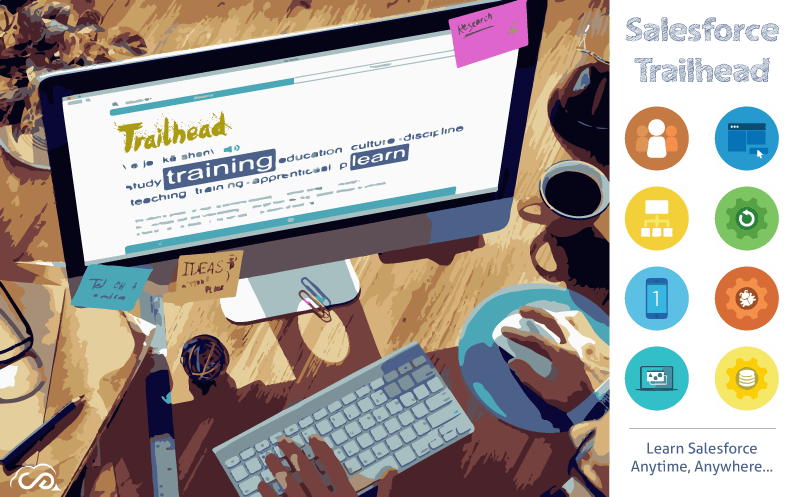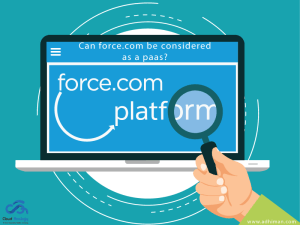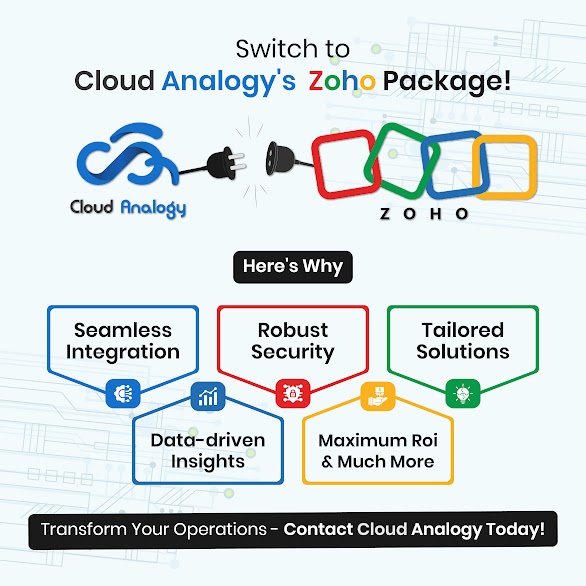Sharing is caring!
What is Trailhead?
Trailhead is an interactive learning methodology through the essential building blocks of the Salesforce1 Platform. It is the better than ever, simpler approach to learning Salesforce. With this system, you can test your knowledge of the platform while gaining points and badges to celebrate your accomplishments.
Trailhead gives developers and administrators a guided, learning path through the key components of Salesforce, utilizing an arrangement of intuitive, online instructional exercises.
Who can use Trailhead?
The introductory content for Trailhead was targeted towards beginners and intermediate developers. Since its launch, Salesforce.com has covered more advanced subjects; thereby making Trailhead a helpful asset for developers and administrators at all levels of experience. The long haul objective of the Trailhead venture is to change how clients learn how to utilize Salesforce, by drastically rearranging and reclassifying the learning experience by making it simpler.
Why Trailhead stands out?
Some key features of Trailhead are:
- Well, Planned Content – Trailhead content is composed of units, modules, and trails to help guide you through all that you need to know about the Salesforce1 Platform.
A unit takes you through several learning objectives for an element or tool of the Salesforce1 Platform in order to reinforce the learning objectives by means of challenges.
A module is a progression of units for a specific branch of knowledge. Once you’ve finished all the units in a module, you will acquire a badge to be displayed on your Salesforce Developers profile. There are presently 30 modules on trailhead with some recent additions like Accounts & Contacts, CRM basics, Event Monitoring, Leads & Opportunities etc.
A trail is a progression of Modules, composed in a guided learning path to help you face different parts of the Salesforce1 Platform.
–This hierarchical arrangement of content in three levels thus: trails, modules, and units, and presented in a particular grouping order, assists clients have a predefined learning path to take after, and they don’t need to invest energy choosing what to read and in what order.
- Self-paced, online learning – you can realize what you need when you require it, by picking up a suitable trail. Trailhead applies the model of intelligent learning model made popular by sites, namely Code School, Codecademy, Udacity, Coursera, and Khan Academy, to the objective of learning Salesforce.
- Modular and engaging content – every instructional exercise comprises of short units, which can be read in 10-15 minutes each. The content is intended to be basic, independent, and specifically helpful, to augment the value of the learning experience.
- Interactive evaluations – toward the end of every unit, you can take a test to check what you just learned, either by answering multiple-choice questions or performing particular tasks in a DE org. On finishing a test, you can click a button and get instant feedback on whether you got it right.
- Gamification – points, and badges are granted when you finish fruitfully the units and modules, respectively. The points and badges are shown on your profile, so you can
These elements combine to make Trailhead a refreshing, new way to deal with learning, providing a more straightforward, less demanding, and all the more captivating choice to begin with Salesforce. Previously, it was troublesome for new clients to find out about particular item features despite the fact that a large amount of detailed and accurate documentation is available, it’s not generally clear what to read and in which order. The incorporation of content and assessment is another key factor in Trailhead’s quality as a learning device and separates it from alternate types of documentation and client assistance Salesforce provides.
How it compares to other resources.
Trailhead content is like the Doc team’s other deliverables like – online help, developer guides, and implementation guides, in the sense that they’re all expected to help clients figure out how to utilize Salesforce products and features. However, Trailhead gives more of a guided and curated learning background. Every module is intended to be straightforward, particular, and independent. The objective is to give clients all the essential data needed to take in a feature—background, contextual, conceptual, and procedural—in one incorporated bundle.At the end of the day, every module clarifies what a feature is, why and when it’s helpful, and additionally how to use it, while being simple and concise.
The docs most like Trailhead are exercise manuals, which give basic instructional exercises, acquainting clients to a particular area, through a progression of steps. However, workbooks can’t give intuitive evaluations. Additionally, the later steps in many workbooks require previous steps as prerequisites, so the client can finish a bigger undertaking, for example, constructing an application. Trailhead units, then again (at any rate until further notice), are intended to be generally autonomous, so that despite the fact that they’re organized in a specific succession, you can pick and choose the content of interest without needing to experience all units in a module, or all modules in a trail.
Collaboration between the Salesforce Developer Marketing and Doc teams, Trailhead was launched at Dreamforce 2014 and from that point forward, the site has been improved with new features and content regularly.In the course of last few months, the Trailhead team has been relentlessly enhancing the site: adding new features and expanding the list of topics covered.
In the most recent redesign, Salesforce likewise revamped the content into four new trails, conveniently distinguished by role and experience level.
- Admin Trail – Beginner
- Admin Trail – Intermediate
- Admin Trail – CRM
- Developer Trail – Beginner
- Developer Trail – Intermediate
- Developer Trail – Mobile SDK
- Dreamforce Trail
How much does Trailhead cost?
The cherry on the cake for you as a client is that all of the Trailhead content is available for free. You can view all learning content without even signing in, yet in the event that you need to keep tabs on your development, complete challenges, and earn points and badges, you will need to login to Trailhead. Signup here for a free Developer Edition if you don’t already have one.
Read Also : Challenges of Undertaking Salesforce Integration

Akshay Dhiman
Chief Technical Officer
Akshay Dhiman, the CTO of Cloud Analogy, has been a standout and successful Salesforce Platform Developer for years. He has a rich experience in Salesforce Integration, JavaScript, APEX, VisualForce, Force.com Sites, Batch Processing, Lightning, PHP, C++, Java, NodeJs, ReactJs, Angular 8, GraphQL, React Native, Web Technology, and jQuery.Hire the best Salesforce Development Company. Choose certified Salesforce Developers from Cloud Analogy now.







Nice write-up Akshay. It is a very useful and informative content t. Thank for the post. Learnt much more information from your content.
Hi Daniel, Appreciate your kind words. We are glad you like it.
Thanks 🙂